If you’ve ever watched your dog enthusiastically excavate your garden or backyard, you’re not alone. Many dog owners have witnessed their furry friends transform into amateur archaeologists, digging with determination and joy. This behavior isn’t random or necessarily destructive – it’s often deeply rooted in canine instincts and breed-specific traits. From terriers bred to hunt burrowing animals to huskies cooling themselves in the soil, digging serves various purposes in the dog world. Understanding why certain breeds are more prone to digging can help pet owners manage this behavior effectively and provide appropriate outlets for their dogs’ natural instincts.
The Evolutionary Background of Digging Behavior

Digging is one of the most ancient and instinctual behaviors in canines. Long before domestication, wild canid ancestors of our modern dogs would dig for various survival-related reasons. They excavated dens for shelter and protection from predators, dug to access prey like rodents living underground, created cool spots to regulate their body temperature, and even cached food by burying it for later consumption.
Despite thousands of years of domestication, these instincts remain hardwired in our companion dogs’ DNA. While modern pets may not need to dig for survival, the genetic programming persists. Through selective breeding, humans have either enhanced or diminished this trait in different breeds depending on their intended working purposes. This explains why certain breeds seem almost compulsively driven to dig while others show little interest in the activity.
Terriers: The Master Excavators
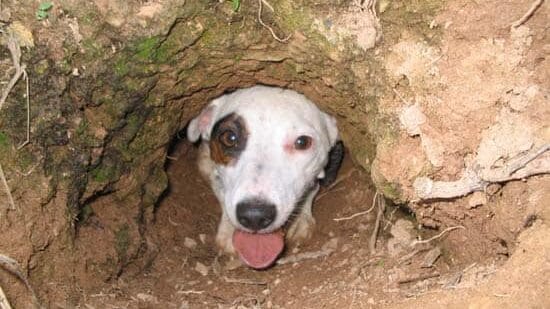
When it comes to digging champions, terriers reign supreme. The very name “terrier” derives from the Latin word “terra,” meaning earth, highlighting their historical purpose as earth dogs. Breeds like Jack Russell Terriers, Fox Terriers, and Scottish Terriers were specifically developed to pursue burrowing vermin such as foxes, badgers, and rats. Their compact bodies, powerful legs, and tenacious personalities made them perfect for digging into underground dens and extracting prey.
These working terriers possess what enthusiasts call “high prey drive” and “earth drive” – a powerful instinct to pursue prey beneath the surface. When a modern terrier detects the scent or sound of something interesting underground, their ancestral programming kicks in, and the digging begins. This behavior is so deeply ingrained that even terriers who have never been trained to hunt may spend hours digging in response to subtle environmental triggers, from the scent of a garden mole to simply seeing loose soil that looks inviting.
Northern Breeds and Temperature Regulation
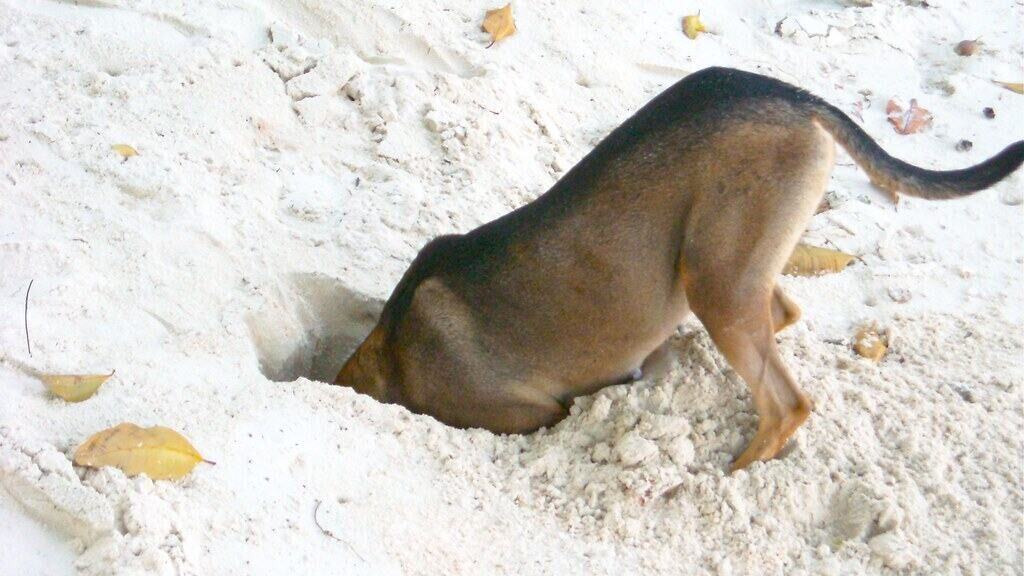
For northern dog breeds like Siberian Huskies, Alaskan Malamutes, and Samoyeds, digging often serves a different primary purpose: temperature regulation. These breeds evolved in arctic environments where digging into snow or soil created protection from harsh elements. In their native habitats, these dogs would dig shallow depressions in snow or cool earth to create resting spots that helped them maintain comfortable body temperatures in extreme conditions.
When summer temperatures rise, you may notice your husky or other northern breed frantically digging in shaded areas of your yard. They’re instinctively creating a cooling pit to lie in. The behavior makes perfect sense considering their thick double coats evolved for sub-zero temperatures. These “cooling pits” allow them to reach cooler soil beneath the surface and provide relief during hot weather. Even in domestic settings with climate control available, the instinct remains powerful and is commonly observed in these breeds.
Hunting Breeds and Prey Pursuit
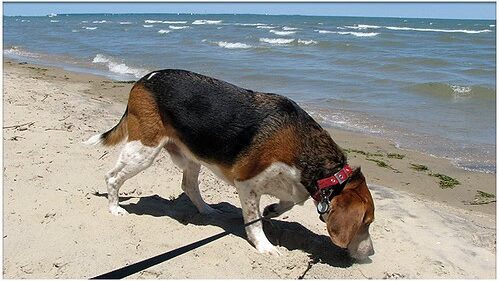
Beyond terriers, many other hunting breeds show pronounced digging tendencies related to their historical work. Dachshunds, with their distinctive elongated bodies and short legs, were bred specifically to pursue badgers and other burrowing animals into their underground homes. Their name literally means “badger dog” in German, and their physical structure evolved to facilitate navigating tunnels and extracting prey. Similarly, Beagles were developed to hunt rabbits, which often seek refuge in burrows.
These hunting instincts translate into modern digging behavior when these breeds detect interesting scents or suspect prey might be hiding underground. A Dachshund or Beagle’s acute sense of smell may pick up traces of rodents, insects, or other creatures that humans can’t detect, triggering their natural hunting sequence. For these breeds, digging isn’t random destruction but purposeful work – they’re doing exactly what generations of selective breeding prepared them to do.
Anxiety and Stress-Related Digging

While some digging is purely instinctual or recreational, excessive digging can sometimes indicate psychological distress in dogs. Breeds particularly prone to separation anxiety, such as Border Collies, Australian Shepherds, and many sporting breeds, may resort to digging as a coping mechanism when experiencing stress. This type of digging often occurs along fence lines or near exit points, suggesting an escape attempt motivated by anxiety about separation from their owners.
Compulsive digging may also develop in breeds with high intelligence and energy levels that aren’t receiving adequate mental and physical stimulation. Working breeds like Belgian Malinois, German Shepherds, and various herding dogs have been selectively bred for endurance, problem-solving, and intense focus on tasks. Without appropriate outlets for these traits, they may channel their energy into repetitive behaviors like digging. This stress-related digging often appears more frantic and persistent than the purposeful digging seen in hunting scenarios.
Nesting Behavior in Pregnant Dogs

Female dogs of any breed may suddenly develop digging behaviors when pregnant, particularly as they approach their whelping date. This instinctual “nesting” behavior stems from their wild ancestors’ need to create safe, comfortable dens for delivering and raising puppies. Even in domestic dogs who have never needed to create their own shelter, hormonal changes trigger this powerful instinct to prepare a secure space for their upcoming litter.
The nesting-related digging typically involves scratching at bedding, carpets, or soft surfaces rather than outdoor excavation, though some dogs may attempt to dig more traditional dens outdoors if given the opportunity. Breeds with stronger maternal instincts, such as Labrador Retrievers, Golden Retrievers, and Collies, may exhibit more pronounced nesting behaviors. This type of digging is temporary and normally subsides after the puppies are born and raised, though it may recur with subsequent pregnancies.
Recreational Digging as Canine Entertainment
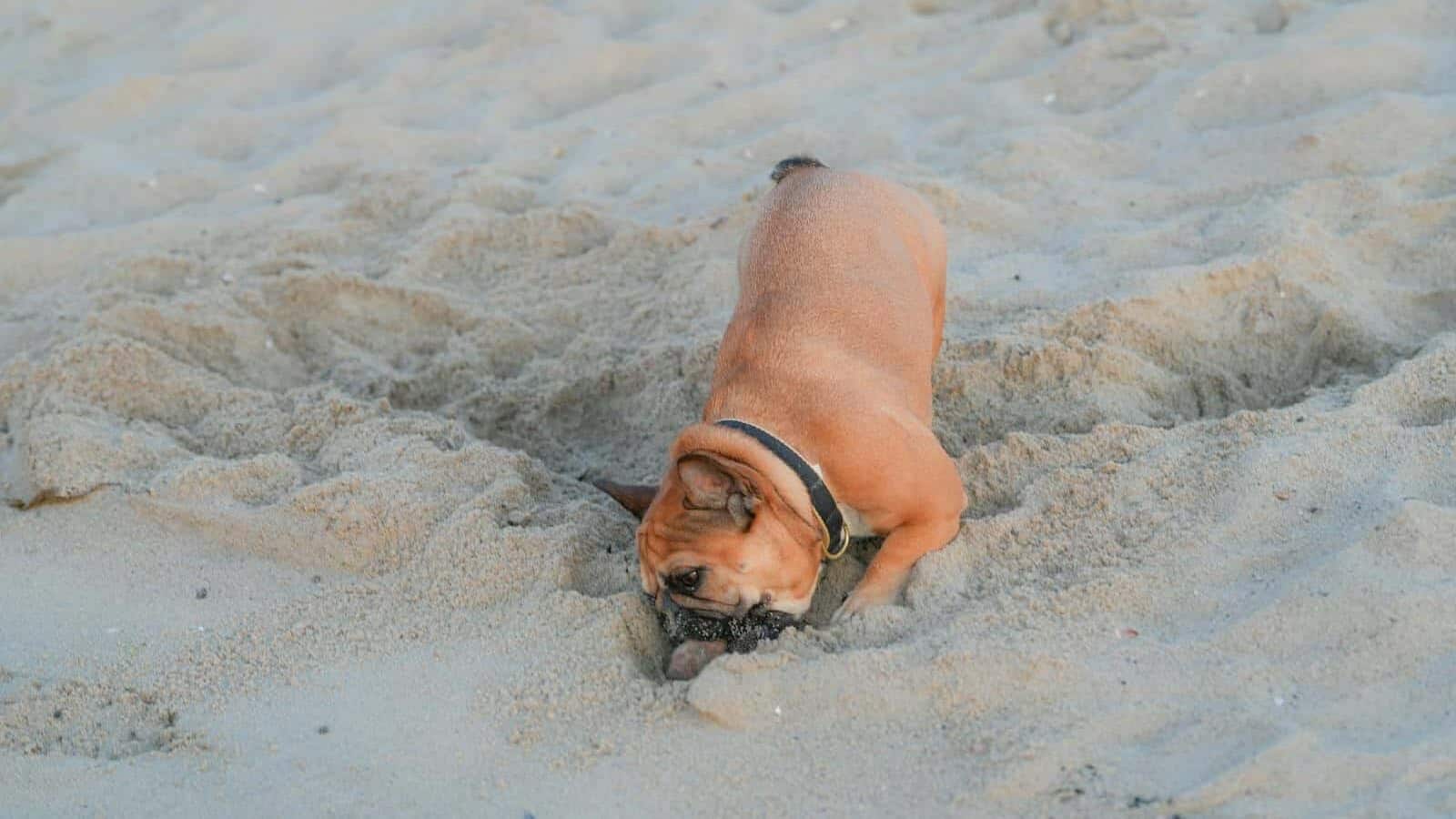
Some dogs simply dig for fun and entertainment. Breeds with playful, energetic temperaments like Boxers, Pit Bulls, and various sporting breeds may engage in digging as a form of self-entertainment. The physical sensation of moving soil, the changing textures, and the novel scents they uncover provide sensory stimulation that many dogs find inherently rewarding. This recreational digging often appears more playful, with dogs sometimes tossing dirt around or pausing to investigate what they’ve uncovered.
Dogs are naturally curious creatures, and digging allows them to interact with their environment in a tactile, engaging way. For breeds with high activity requirements and intelligence, digging represents problem-solving and environmental manipulation – skills that would have been valuable in their ancestral roles. The satisfaction of creating something (even if that “something” is a hole) provides mental stimulation and can be quite fulfilling for dogs, particularly those bred for independent work and decision-making.
Boredom and Excess Energy

Perhaps the most common cause of problematic digging across all breeds is simply boredom and excess energy. Breeds developed for endurance work, such as Border Collies, Australian Cattle Dogs, and Weimaraners, have extraordinary energy reserves that need appropriate outlets. These dogs were selected over generations for their ability to work tirelessly for hours – herding livestock, hunting game, or performing other demanding tasks. When these energy needs aren’t met through exercise and mental stimulation, digging can become a default activity.
The relationship between exercise and digging behavior is clear: under-stimulated, under-exercised dogs are far more likely to dig destructively. A Border Collie bred to run miles every day herding sheep won’t have its needs met by a brief walk around the block. Without adequate outlets, this energy gets redirected into behaviors like digging, which provides both physical exertion and mental engagement. Many owners notice that digging diminishes significantly when their dogs receive appropriate exercise, training, and enrichment activities tailored to their breed’s needs.
Burying Treasures: Food and Toy Caching
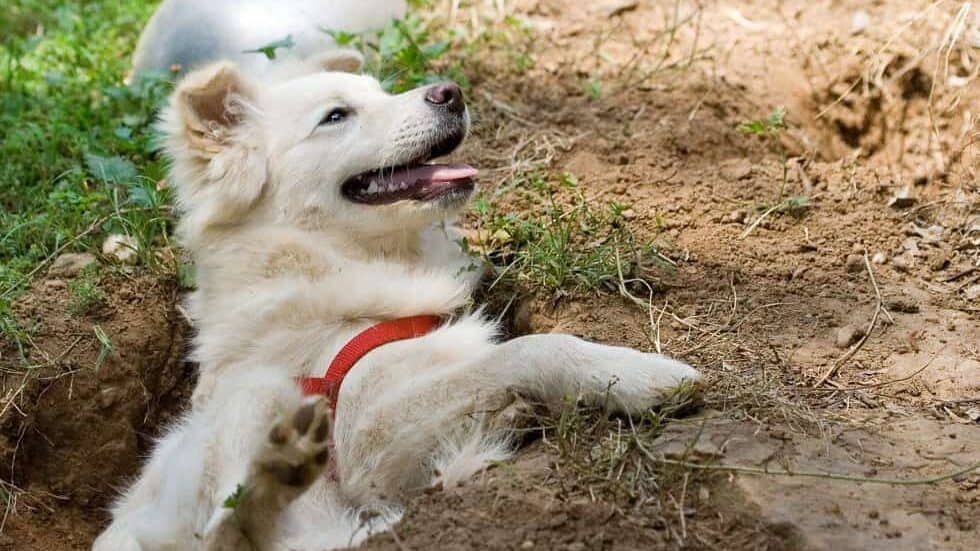
Many dogs exhibit a fascinating behavior known as “caching” – the instinct to bury food, toys, or other valued items for later retrieval. This behavior directly mimics their wild ancestors’ survival strategy of hiding surplus food to prevent scavenging by competitors and to create emergency reserves. Breeds that historically worked independently and needed to manage resources, such as many hound varieties and spitz-type dogs, often show stronger caching tendencies.
You might notice your dog carefully burying a favorite bone, then covering it meticulously with their nose, seemingly ensuring it’s well-hidden. Some dogs go to extraordinary lengths to secure their treasures, digging substantial holes and even moving objects to disguise the burial site. This behavior, while sometimes amusing to observe, can be frustrating when valuable household items disappear into the backyard. Caching behavior typically increases when dogs feel resource insecurity or have more items than they can enjoy at once.
Managing and Redirecting Digging Behavior

Understanding why your particular dog digs is the first step toward effectively managing the behavior. For breeds with strong digging instincts, like terriers and dachshunds, completely eliminating digging may be unrealistic and potentially frustrating for the dog. Many behaviorists and trainers recommend creating a designated digging area – a sandbox or specific garden section where digging is permitted and even encouraged. This compromise acknowledges the dog’s natural instincts while preserving the rest of your landscape.
For dogs digging due to boredom or excess energy, increasing physical exercise and mental stimulation is crucial. Breed-appropriate activities make a significant difference – letting a terrier participate in controlled earth dog trials, providing puzzle toys for intelligent breeds, or ensuring northern breeds have adequate cooling options during warm weather. Training activities that tap into natural instincts, like scent work for hounds or agility for athletic breeds, can redirect energy that might otherwise be channeled into destructive digging. The most successful management strategies work with a dog’s natural tendencies rather than against them.
Breeds Least Likely to Dig

While many popular breeds have strong digging tendencies, others show relatively little interest in excavation activities. Breeds developed primarily as companions rather than working dogs often exhibit less digging behavior. Brachycephalic (flat-faced) breeds like Bulldogs, Pugs, and Shih Tzus generally show minimal interest in digging, partly due to their physical structure making the activity more challenging and partly because their breeding focused on temperament traits suited for companionship rather than hunting or working.
Some larger breeds also demonstrate lower digging tendencies. Great Danes, Saint Bernards, and Newfoundlands were bred for specific working purposes that didn’t involve digging, and their massive size makes sustained digging physically demanding. Guard breeds like Rottweilers and Doberman Pinschers typically focus more on surveillance and protection than on digging activities. However, it’s important to remember that individual personality, environment, and specific circumstances can influence behavior regardless of breed tendencies – any dog might dig given the right motivation.
Digging behavior in dogs represents a fascinating intersection of genetics, instinct, and environment. By understanding the specific motivations behind your dog’s digging – whether it’s pursuing prey, seeking comfort, managing anxiety, or simply burning off excess energy – you can develop more effective and compassionate strategies for managing this natural behavior. Rather than punishing dogs for expressing deeply rooted instincts, successful owners learn to provide appropriate outlets and alternatives.
The breeds most prone to digging – terriers, northern breeds, and various hunting dogs – are simply exhibiting behaviors that humans intentionally selected for over hundreds of generations. Their digging represents not defiance or destructiveness but the successful expression of traits we deliberately bred into them. By honoring these instincts while establishing reasonable boundaries, we create healthier relationships with our canine companions and environments that allow them to express their natural behaviors appropriately.
Next time you catch your dog enthusiastically digging in the garden, remember that you’re witnessing the result of thousands of years of evolution and selective breeding. With patience, understanding, and creative management strategies, you can find a balance that respects your dog’s natural tendencies while preserving your landscape. After all, those paws were made for digging – our challenge is directing that energy into appropriate channels that satisfy both human and canine members of the household.
- Why Do Some Dog Breeds Love to Dig Holes? - August 10, 2025
- The Largest Whale Ever Caught on Camera - August 10, 2025
- The Amazing Memory of Migratory Monarch Butterflies - August 10, 2025

